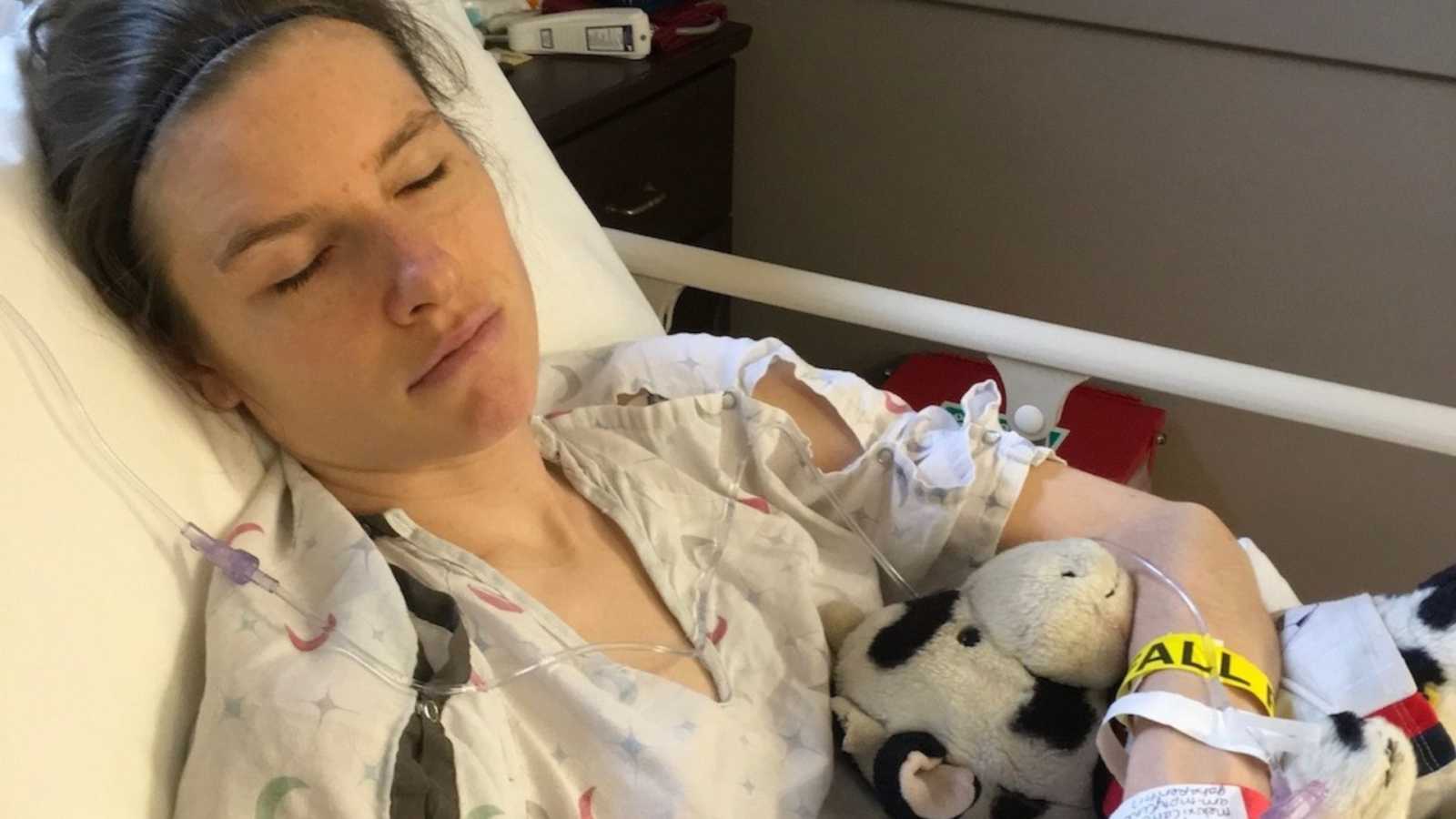My CRPS Journey
“I know I’m not the only person to have been told by a doctor all conventional treatment options have failed. You have tried every possible medication and procedure, only to be left in a body still riddled with a painful disease. Now, all that remains are experimental treatments, which have worked for some, but insurance will not cover. Those are words no one wants to hear, especially not one in their 20s with decades ahead of them.
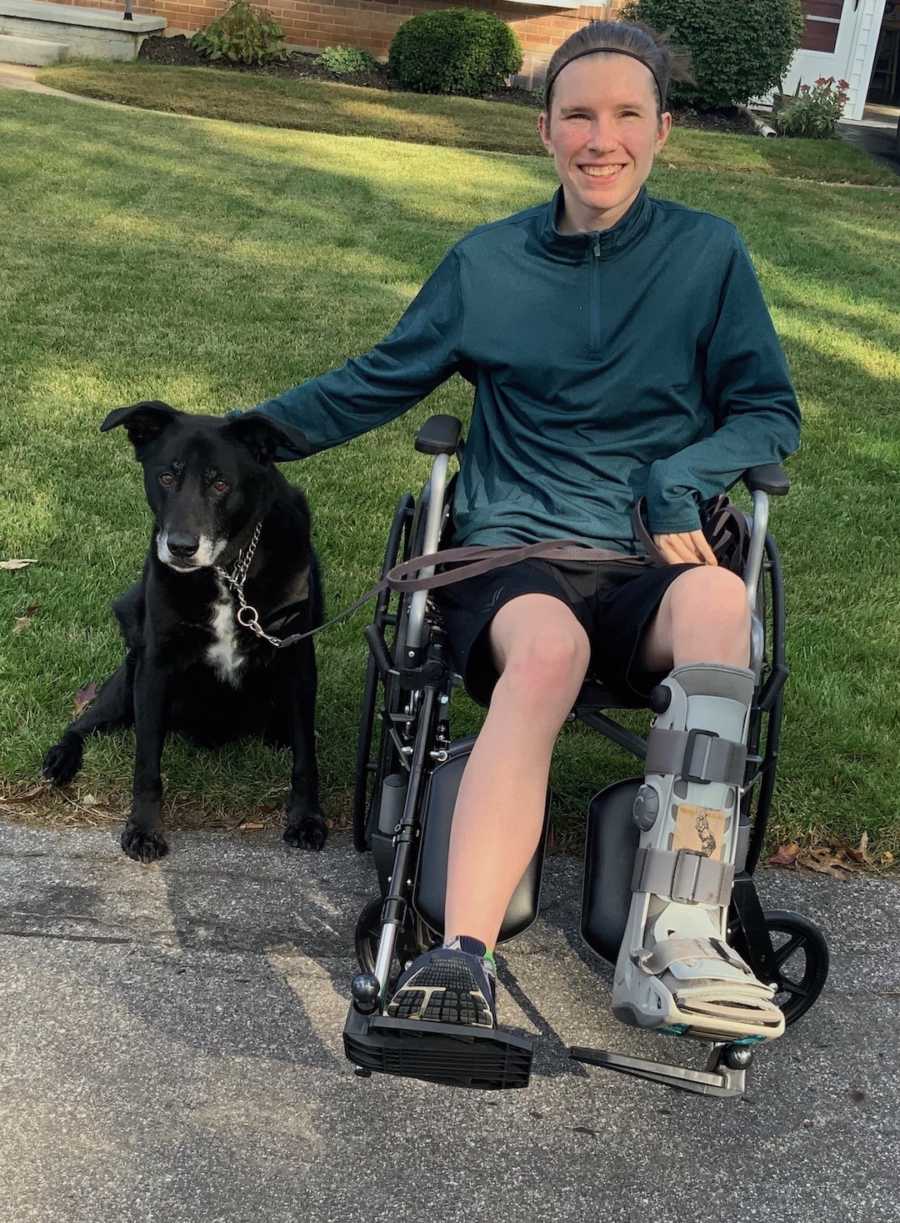
November 1st marked the beginning of RSD/CRPS Awareness Month. CRPS (Chronic Regional Pain Syndrome), is a life-long condition, also known as the ‘Suicide Disease,’ because without proper pain control, the feeling of being burned, skinned, shot, or as if one’s limb(s) will blow apart, makes life unbearable. Furthermore, CRPS spreads…slowly, unpredictably, and sometimes, as in my case, like wildfire.
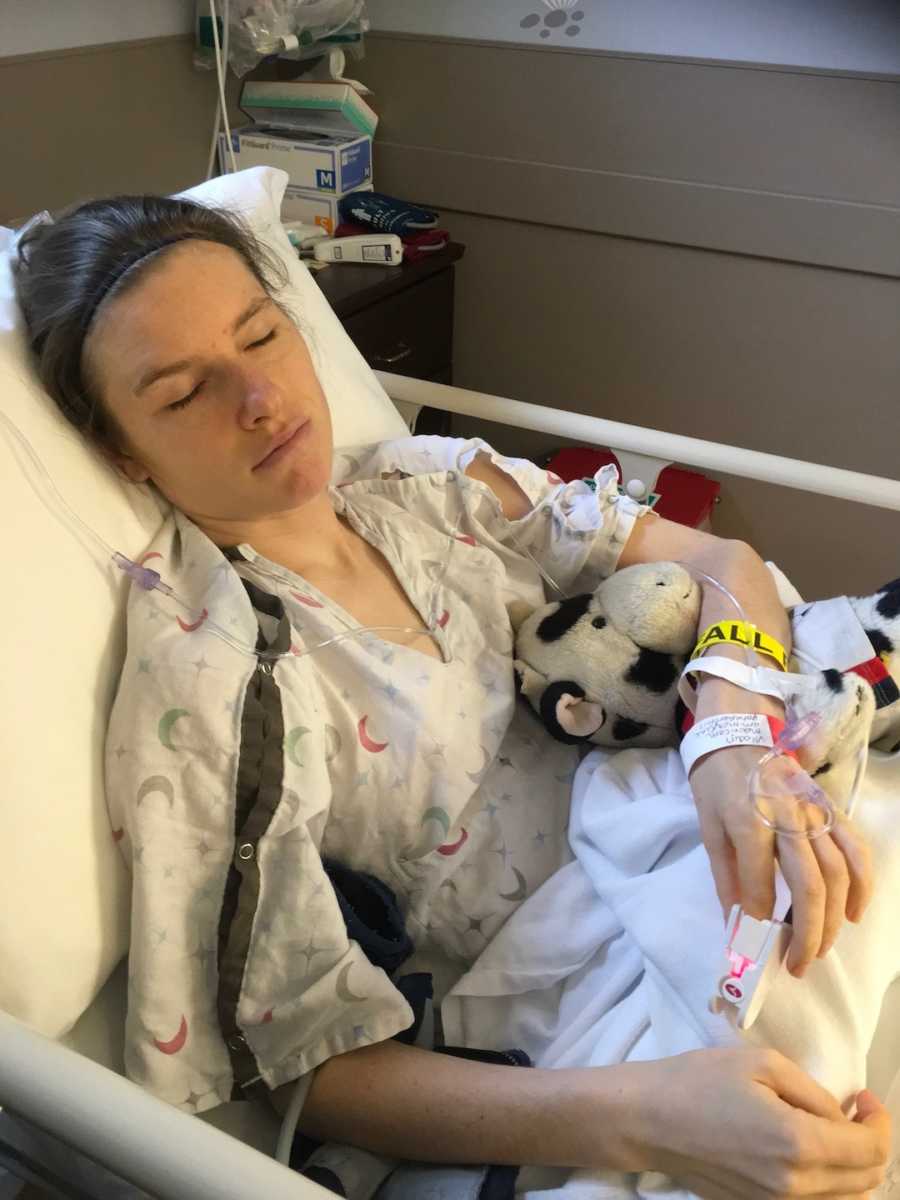
Life has not been too kind to me over the last decade. After sustaining a traumatic brain injury in 2010 during my freshman year at college, I suffered a spontaneous L5S1 rupture, which left me with drop foot due to a lengthy surgical delay. Fortunately, I soon found a foot and ankle surgeon who was doing a new procedure to reverse the drop foot. A week before Christmas of 2013, I received the greatest gift of all: a successful tendon transfer and Achilles lengthening, which allowed me to walk normally again.
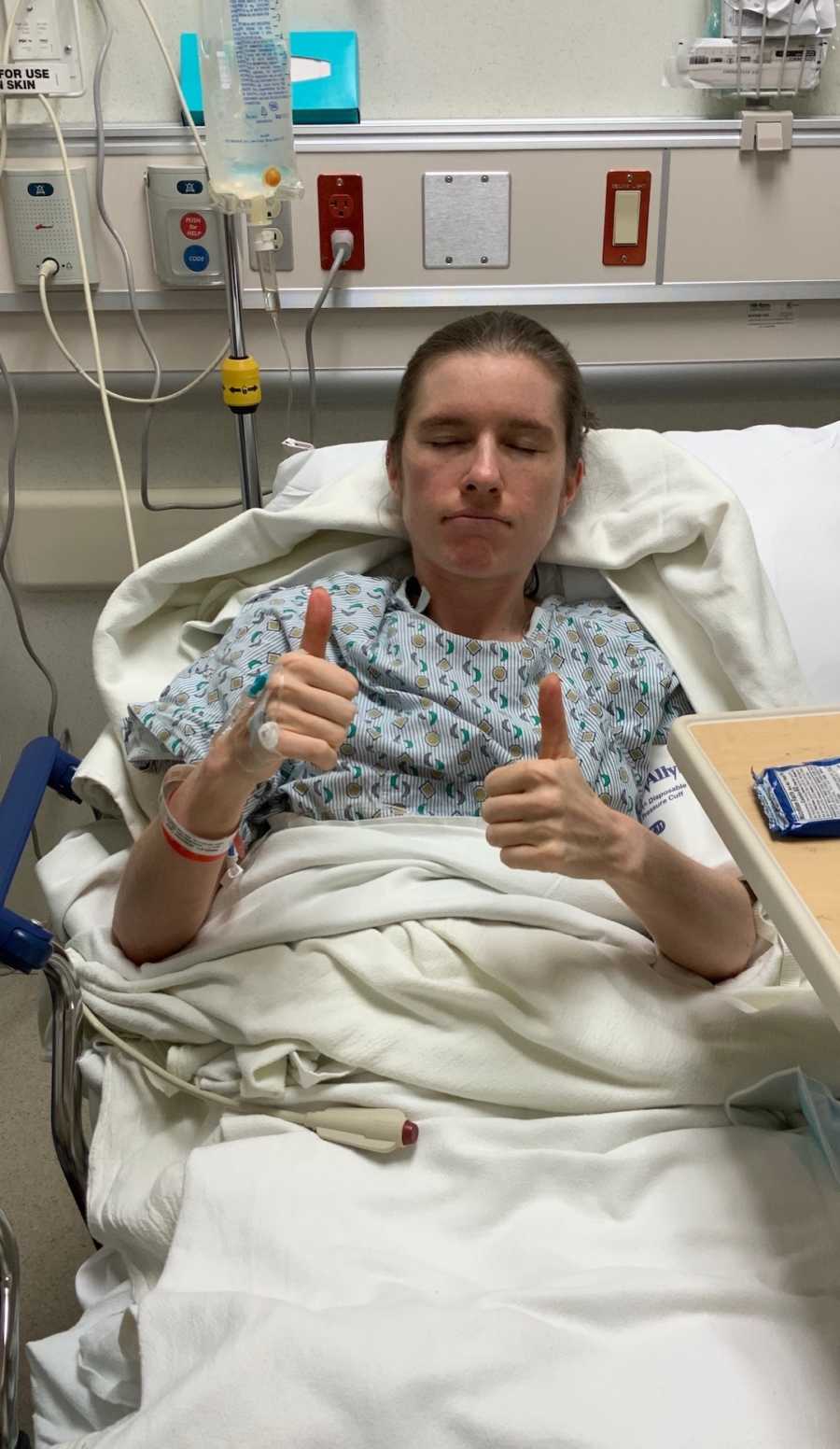
New Injuries
I was doing well until January of 2018, when I shattered my left heel. While I was glad to discover my tendon transfer had not been impacted, my life was turned upside down by a botched reconstructive surgery, and was soon followed by a revision and subtalar fusion with a new surgeon. All the while, I began experiencing extreme bouts of pain in that foot, and I noticed it was turning black.
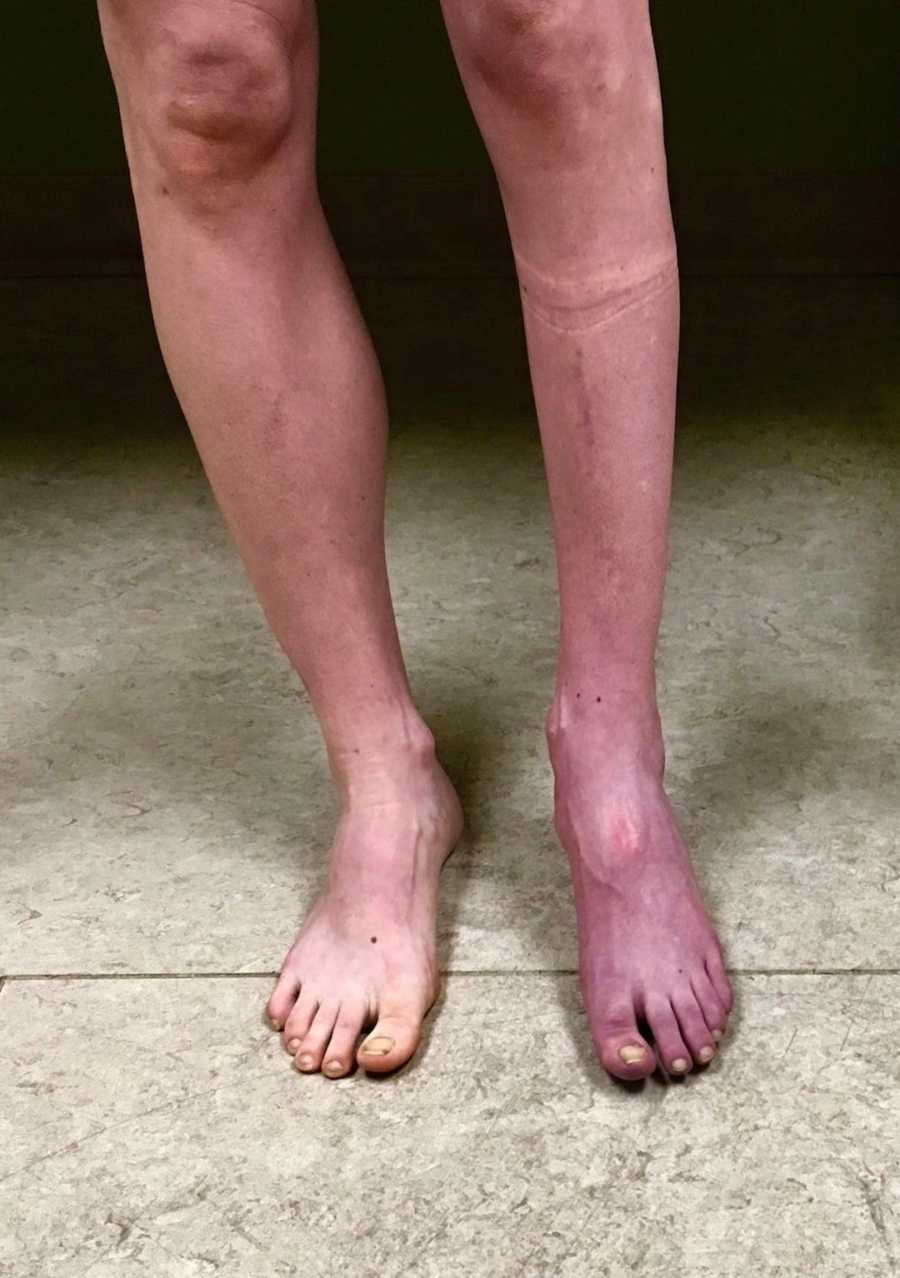
Three surgeries and a year later, we drove up to Hershey Med where a standing CT scan revealed EVERYTHING had healed wrong. My new surgeon had to completely reconstruct my foot with fusions, new hardware, a slab of my hip, and cadaver bone. While the surgery fixed the anatomy of my foot, it only worsened the discoloration and pain. When I was three months post-op and still in extreme discomfort, my surgeon sent me to a pain management specialist, who immediately diagnosed me with CRPS Type I.
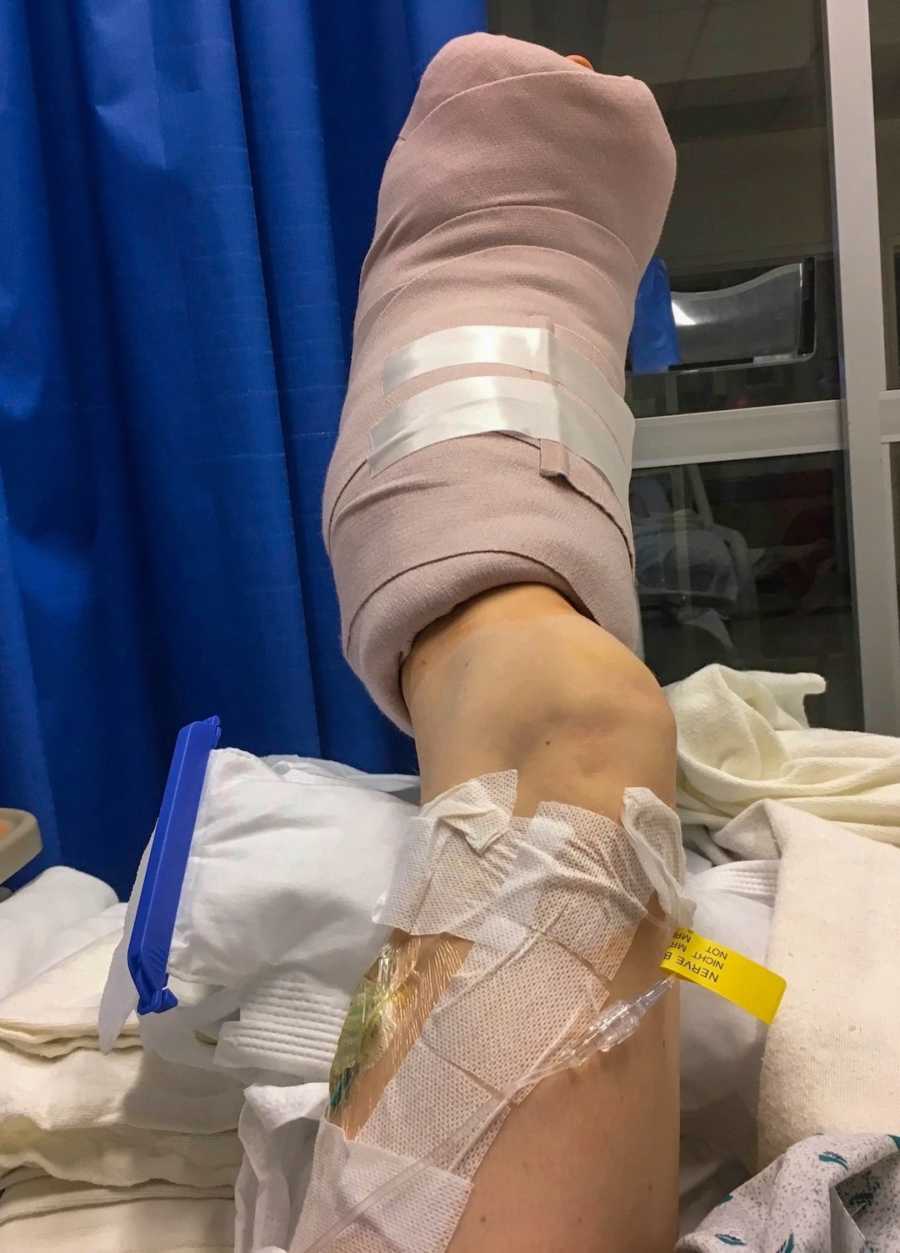
Time In The Hospital
I was soon scheduled for a lumbar sympathetic nerve block, which I was told would help my pain. When the first one failed, I agreed to a second; not knowing this procedure could (and would) spread my CRPS. The morning following the second block, I awoke to a fever and agonizing full-body pain. By that night, I couldn’t even lift my head without passing out. My mom rushed me to Hershey Med, where my pulse crashed and I was stabilized in resus.
I spent 10 days inpatient, where they tried, but failed, to control my pain, as the spinal injection had spread the CRPS to my entire body from the chest down. I was then transferred to rehab for 20 days before returning home, completely wheelchair bound, requiring 24/7 care, and unable to move without severe pain no amount of medication could touch.
At the end of January 2020, I had a successful trial for a pain management device called a Spinal Cord Stimulator (SCS). This was soon followed by a permanent implantation of the device, which significantly reduced my widespread pain. I was once again able to sit up and perform simple tasks, but I was still unable to walk because the SCS signals couldn’t reach my foot, due to a buildup of scar tissue from when I ruptured my L5S1.
New Treatments
After having an unsuccessful trial with a Peripheral Nerve Stimulator, I underwent a trial for a newer kind of stimulator, called a DRG. The trial was successful in helping my heel pain and skin sensitivity, so I had the DRG permanently implanted at the end of July. Recovery was very difficult, as I spent six weeks battling a post-op infection, followed by a severe allergic reaction to the antibiotics.
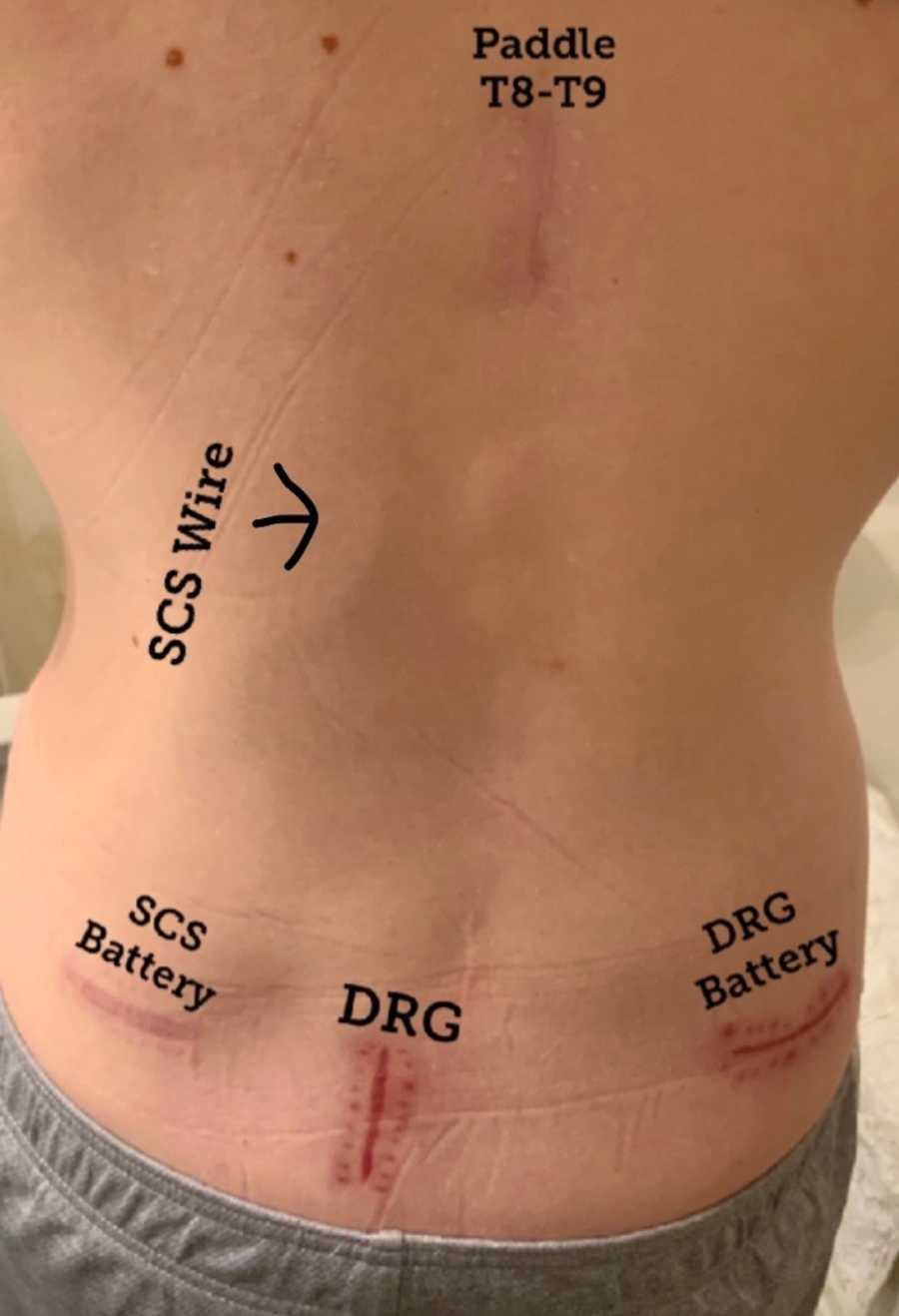
Unfortunately, the permanent DRG has not provided as much relief as the trial. After getting the all clear from my neurosurgeon, I returned to my foot and ankle surgeon last month to see if he could help in any way. A thorough examination of my foot and x-rays revealed I, once again, have drop foot. Additionally, the bones in my foot are completely hollowed out, and my lower leg and foot are no longer viable, as they have been eaten away to skin and bone by the CRPS.
At this week’s appointment with a CRPS specialist, I was told nothing else can be done to decrease my pain. While this news was devastating, I refuse to give in to the depression which so often takes the lives of CRPS patients. I’ve dedicated the last several months to building a YouTube channel, bringing awareness to the plight of CRPS patients and educating viewers on the various devices I have had implanted. In short, I want my pain to have a purpose. Furthermore, I don’t want anyone to feel as alone or lost as I did at the beginning of my chronic pain journey.
As my favorite shirt says: I MIGHT HAVE CRPS, BUT IT DOESN’T HAVE ME.”
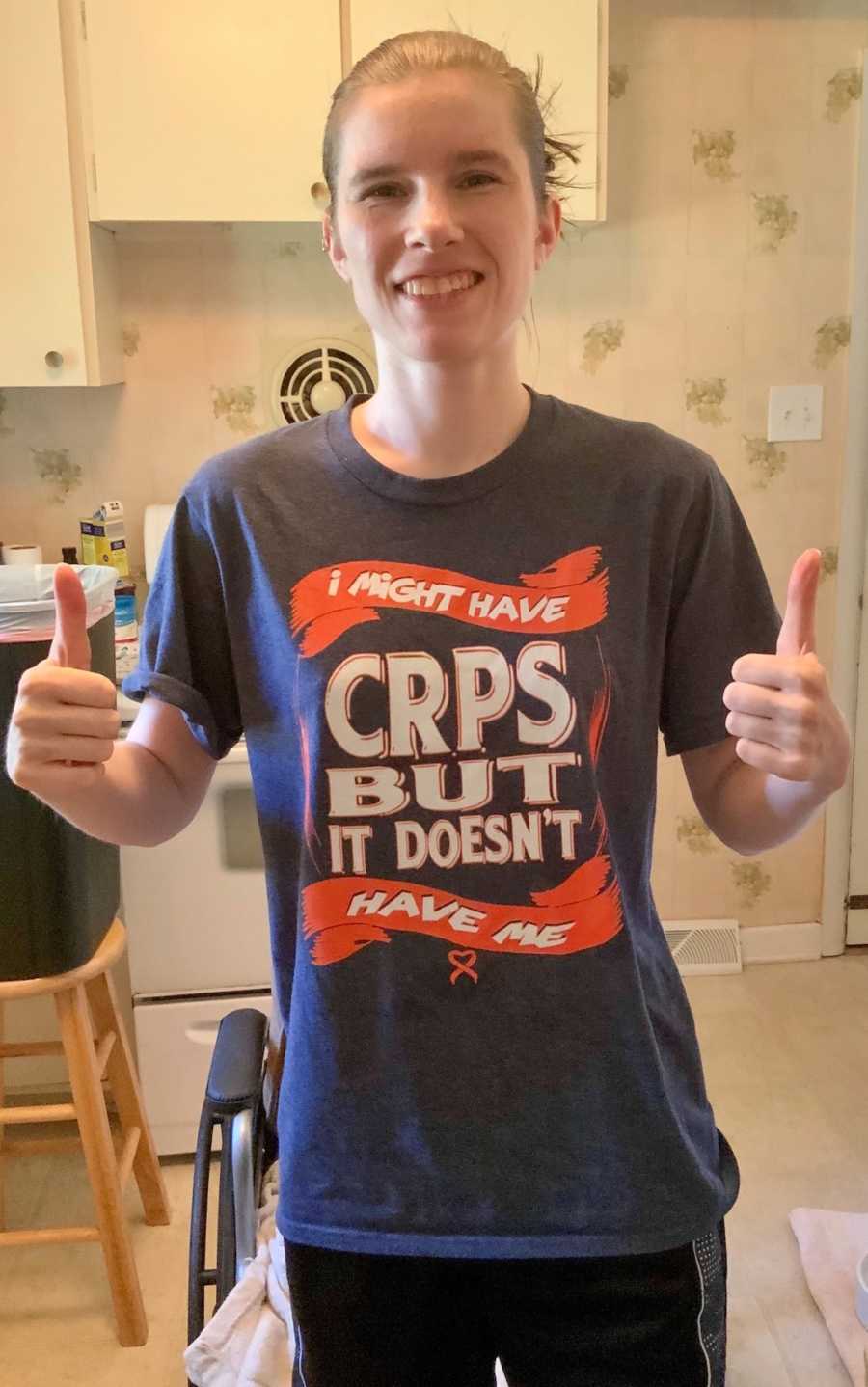
This story was submitted to Love What Matters by Jennifer Hindley. Submit your own story here, and be sure to subscribe to our free email newsletter for our best stories, and YouTube for our best videos.
Read more stories from CRPS warriors:
Provide hope for someone struggling. SHARE this story on Facebook with friends and family.

